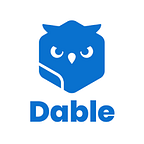RTB(Real Time Bidding) Process and Main Bidding Model — Part 2
RTB (Real Time Bidding) innovated the online advertising market by allowing to purchase the inventory of ‘target users’ and not the ‘website’ target users visit.
Let’s say there is Advertiser A who sells baseball bats.
In the past, Advertiser A advertised baseball bats by purchasing the inventory’ on ‘Baseball Media’ where men between ages 30–40 frequently visit. However, although ‘Baseball Media’ may be a website that men aged between 30–40 often visit, the advertisement is also exposed to females in their 20s and males in their 70s who access the website. In this situation, the advertiser is spending unnecessary costs by exposing advertisement to users who are less likely to purchase baseball bats.
On the other hand, RTB can expose advertisement solely based on the ‘user’ and not the media’s inventory. Thus, advertisers can improve advertising results by exposing the advertisement to only men aged 30, 40 who are most likely to make a purchase whilst hiding the advertisement to the rest of the ‘Baseball Media’ visitors.
RTB Process
From a bird’s eye view, RTB is carried out in 6 steps.
This whole process happens within 0.1 seconds before the website accessed by the user finishes loading.
- ‘Dable Kim’, male, aged 45 who likes sports, access ‘Baseball Media’ through mobile web.
2. As soon as ‘Dable Kim’ visits ‘Baseball Media’, the user’s browser sends an ‘Ad request’ to the ‘server’.
The ‘server’ then uploads this ‘Ad Impression’ onto ‘Ad Exchange’.
3. ‘Ad Exchange’ then transfers this information about ‘Ad Impression’ to all the DSPs (advertisers).
At this point, information of the user ‘Dable Kim’ (male, aged 35, likes sports etc.) and media information of ‘Baseball Media’ (domain, ad format, ad size, ad location, minimum CPM standard, etc.) are included.
4. DSP(Demand-Side Platform), which receives information about ‘Ad Impression’ from ‘Ad Exchange’, examines all the campaigns from their advertiser pool and finds out ‘which ads’ should be exposed to ‘Dable Kim’, who visited the website ‘Baseball Media’, hence determining the bidding price.
If the DSP has an ‘advertiser that sells baseball bats targeted towards 30 year old males who likes sports’, a high bid will be presented as it is highly related to ‘Dable Kim’. Whereas, DSPs with advertisers targeting women in their 30s or teenage boys will bid at a lower price.
5. The DSPs that have set bid prices offer their respective biddings in ‘Ad Exchange’.
6. ‘Ad Exchange’ then checks the bidding placed by DSPs and airs the winning advertisement to ‘Dable Kim’ who visited ‘Baseball Media’.
RTB Digital Buying Model
So then how are the winners selected?
The bidding models for RTB are largely divided into First Price Auction and Second Price Auction.
First Price Auction
The First Price Auction model is the method of selecting the top bidder among all the bidding advertisers for a publisher’s inventory. The successful bidder pays the winning bid price.
At first glance, it seems fair the advertiser who offers the highest bid wins and pays the suggested bid price. However, it is found that competition among advertisers intensify over time and a higher price is paid than the actual value of the advertising inventory in order to win the competition. In addition, such high prices will reduce DSPs’ participation in bidding.
Second Price Auction
The Second Price Auction model also selects the advertiser with the highest bid offer for an impression. However, the price they bid is rarely the same amount they pay as the winning bidder pays only USD0.01 more than the second-highest bid.
This auction has the advantage of paying less than the bid price offered by the advertiser. However, second price auction can bring a loss to media companies by selling their impression at a price lower than the value of the actual inventory.
Therefore, in order to reduce these losses, publishers manage lower price limit through the following price floors. A Hard Floor, where a minimum price floor is set and bids below price floor are canceled, or a Soft Floor where an approximate value is passed even though the floor price is unmet.
Recently, Google announced that it would switch from Second Price Auction to Fist Price Auction. RTB transaction methods continue to develop in order to increase advertising efficiency and maximize the profits of publishers, through these methods such as combining the first and second price auction models, or even dividing the level of bidding participants so that only prestigious groups can purchase premium media inventory.
In the next post we will take a look at why RTB has become a major trend and its advantages.
